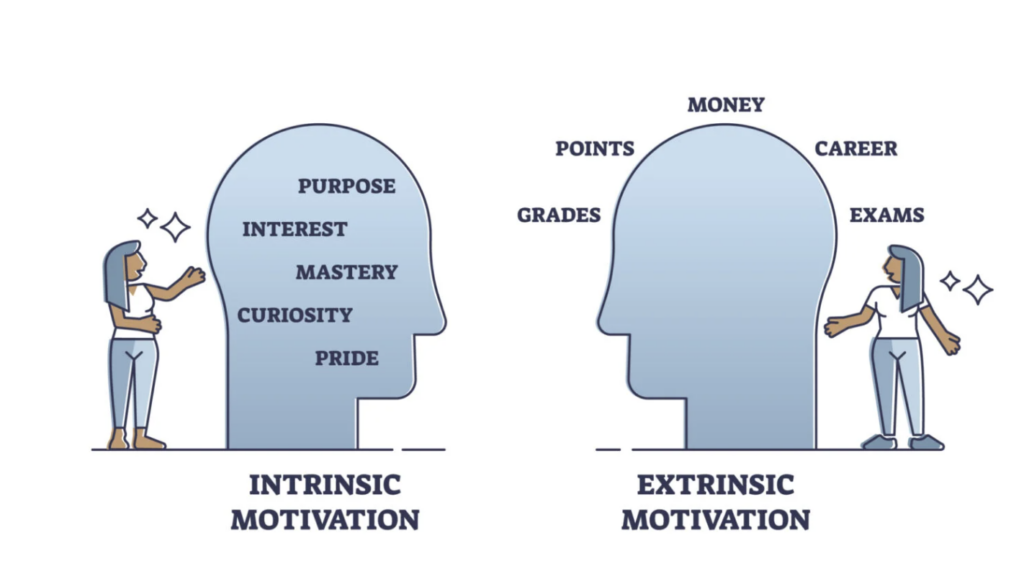Free Inquiry – Integrating Intrinsic and Extrinsic in Learning Environments
Over the past few weeks, I have explored both intrinsic and extrinsic motivation, learning how they play key roles in students’ engagement with their learning. This week, I wanted to focus on how teachers can balance intrinsic and extrinsic motivation to create more effective learning environments. I have learned that motivation should not be categorized into two separate categories; instead, it should be viewed as a continuum. This theory is described in the Self-Determination Theory. According to this theory, extrinsic motivation can evolve into intrinsic motivation as learners begin to internalize the reasons behind their actions. This suggests that even though a student might initially be motivated by external rewards, such as a grade, these external motivators can eventually help develop an internal sense of purpose.
Using both as motivators allows teachers to use extrinsic motivators as a starting point and then create moments where autonomy, competence, and relatedness can be fostered. Autonomy, competence, and relatedness are the three psychological needs that foster intrinsic motivation. For example, teachers can provide students choice in assignments or link lessons to personal goals they might have. Encouraging choice helps students shift from learning for external rewards to learning because they find meaning in what they are doing. An example of using both is when teachers try to implement games in learning environments, like when teachers use a point system in their class to encourage participation. The points act as extrinsic motivation, but since earning points requires mastery and problem-solving solving it ties into intrinsic motivation. These rewards can work together to sustain short and long-term engagement. Nevertheless, it is important not to overuse extrinsic rewards as the overjustification effect can occur. The overjustification effect happens when people attribute their participation in an activity to the external rewards rather than their personal drive. This can negatively affect motivation in the long term, as without intrinsic rewards, it makes the activity becomes less fulfilling over time. This week, I have learned that extrinsic and intrinsic motivation complement each other when used deliberately. Teachers can use external motivation to initially catch the students’ attention, but the long-term goal should be to foster the students’ self-drive and interest in the subject.

Reference
Deci, E. L., & Ryan, R. M. (2000). The “what” and “why” of goal pursuits: Human needs and the self-determination of behavior. Psychological Inquiry, 11(4), 227–268.